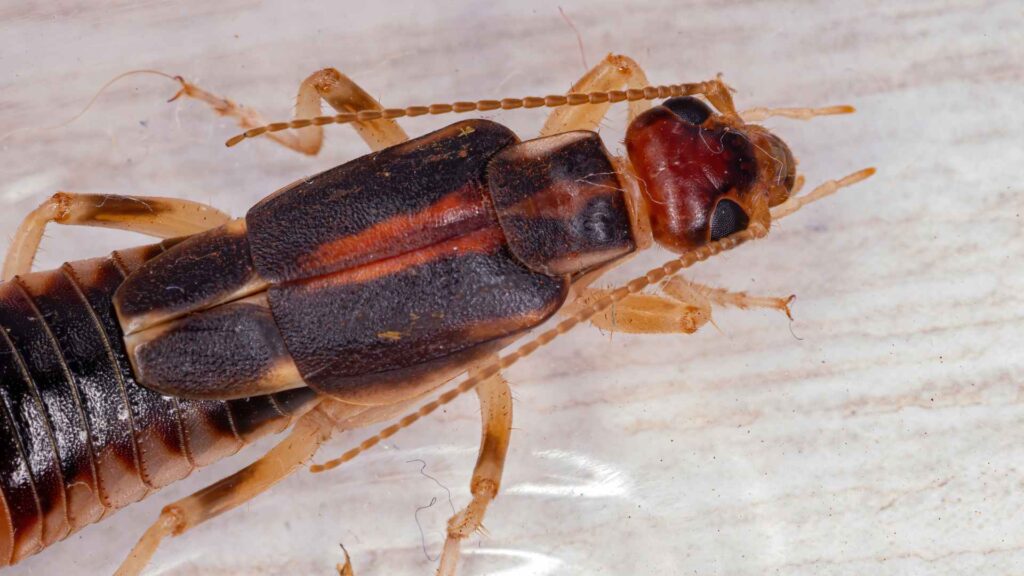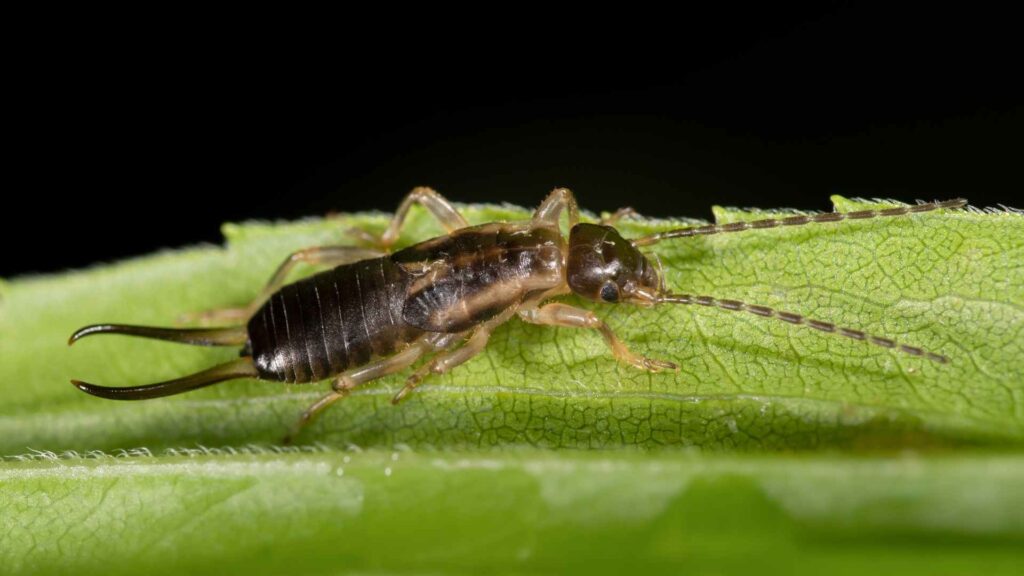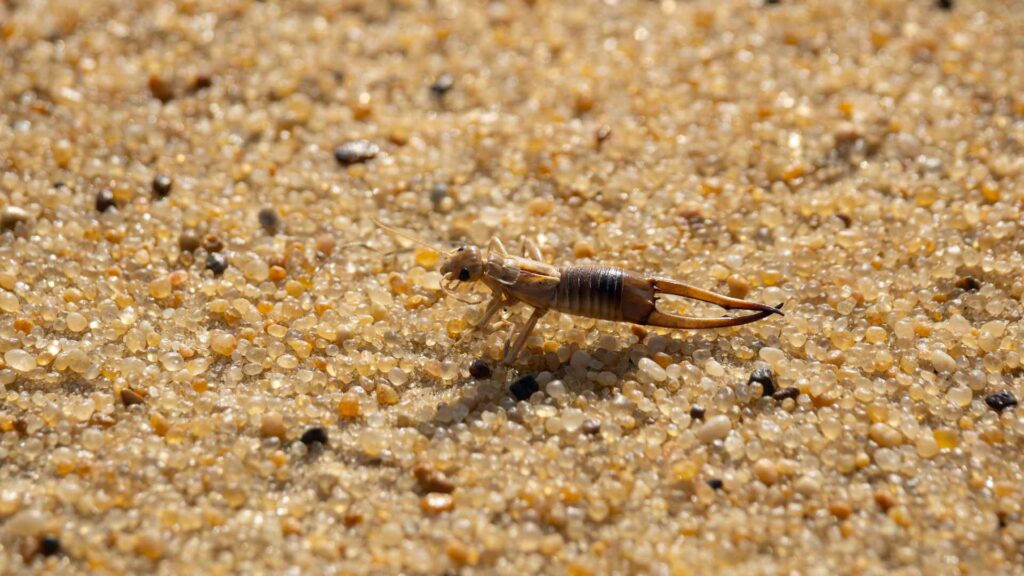Table Of Content
ToggleAs a seasoned pest control expert, I’ve witnessed firsthand the frustration earwig infestations can cause in homes. These creepy crawlies, while not typically dangerous, can be a nuisance and leave you searching for reliable “earwig treatment house” solutions.
This comprehensive guide will equip you with the knowledge and strategies to eliminate earwigs and keep your home earwig-free.
Earwigs, primarily nocturnal insects, are most commonly found in the following species within houses:
These flat, fast-moving insects with pincers at their rear ends favor damp environments. Here’s what to watch for:

Understanding what attracts earwigs helps with effective “earwig treatment house” strategies.
Factors Attracting Earwigs:
Common Entry Points:
Unfortunately, earwigs are often nocturnal, making them difficult to spot directly. Here’s how to identify their presence:
Visual Cues:
Signs of Earwig Damage:
Understanding Earwig Nesting Areas:
Earwigs prefer to nest in damp, secluded areas. Look for them in:
Signs of Earwig Nests and Colonies:
Explore your pest control options for a safer home today.

Don’t despair! Here are ten proven methods for eliminating earwigs from your home:
Earwigs thrive in damp environments. Fix leaky pipes, faucets, and clogged drains promptly. Consider using a moisture meter to identify hidden dampness behind walls or under floors.
In areas prone to humidity, invest in a dehumidifier to regulate moisture levels, making your home less attractive to earwigs.
Earwigs are scavengers, so denying them food sources is crucial. Clean up crumbs, spills, and decaying matter promptly, especially in kitchens and bathrooms.
Store food in sealed containers to prevent attracting earwigs and other pests. Pay attention to pet food areas and clean up any spilled kibble or treats.
Earwigs are skilled at squeezing through tiny cracks. Caulk cracks around windows, doors, foundations, pipes, and any other potential entry points.
Install tight-fitting screens on vents and openings to further deter earwig intrusion.
Diatomaceous Earth (DE) is a natural powder made from fossilized algae that dehydrates insects. Sprinkle DE lightly around suspected entry points, hiding areas like cracks and crevices, and behind appliances. Be sure to reapply DE after vacuuming or heavy rain.
Caution: While generally safe for humans and pets when used correctly, avoid inhaling DE dust. Wear a mask when applying and keep it out of reach of children and pets.
Create your own DIY earwig traps using readily available materials. Here’s a simple method: dampen a piece of cardboard or roll up a newspaper.
Place the trap near suspected earwig activity, like near baseboards or under sinks. Earwigs are attracted to the moisture and will crawl inside. Empty and reset the traps frequently.
Boric acid is a desiccant that dries out insects. It can be effective against earwigs, but use extreme caution due to its toxicity.
Only apply boric acid in cracks and crevices out of reach of children and pets. Wear gloves and a mask when handling boric acid, and strictly follow all safety instructions on the product label. Consider alternative methods if you have concerns about using boric acid.
A simple yet effective method involves using a soap solution.
Mix a tablespoon of dish soap with a quart of warm water.
Spray the solution directly on earwigs you encounter. The soap disrupts their outer coating, causing dehydration and death.
Avoid using this method near food prep areas or around pets.
If your earwig infestation is severe and other methods haven’t been successful, consider using targeted earwig insecticides.
Only use insecticides as a last resort and choose a product labeled specifically for earwigs. Always follow the label instructions carefully to ensure safe and effective application.
Vacuuming regularly helps remove earwigs and their eggs from carpets, rugs, and furniture.
Pay particular attention to areas where earwigs are commonly found, like baseboards and corners. Empty and dispose of the vacuum bag properly to prevent earwigs from escaping back into your home.
Earwigs have natural predators in the form of spiders, centipedes, and certain ground beetles. While these creatures might not be the most welcome houseguests, they can help control earwig populations outdoors.
Consider creating a habitat for these beneficial insects in your garden using rocks, logs, and leaf litter. This can help deter earwigs from entering your home in the first place.
By implementing a combination of these methods, you can effectively eliminate earwigs from your home and create a less hospitable environment for them in the future.
Choosing the Right Method:
Consider the severity of the infestation, your comfort level with various methods, and the presence of children or pets in your home when selecting the best earwig treatment approach.
Tailor your pest management strategy. Start now.

Earwigs can show up in unexpected places. Here are some solutions for addressing earwigs in specific areas:
Remember, a combination of methods often yields the best results. By addressing the underlying causes of earwig attraction and implementing targeted solutions, you can effectively eliminate these pests from your home and prevent future infestations.

Once you’ve won the battle against earwigs, focus on prevention:
While the methods above can be effective, there are situations where calling a pest control professional is the best course of action:

As a pest control expert, I understand the importance of creating a comfortable and pest-free environment. By implementing the strategies outlined in this guide, you can effectively eliminate earwigs from your home and prevent future infestations. Remember, ongoing prevention and monitoring are key to maintaining a happy, earwig-free home.
Don’t let earwigs take over your living space! Take action today using the methods outlined above. For further information or assistance with a severe infestation, consult a qualified pest control professional.
To effectively get rid of earwigs in your house, start by eliminating their hiding spots and entry points such as cracks in walls and doors. Use a vacuum cleaner to remove them from visible areas and regularly clean up debris and clutter where they might hide. Set up traps using oil or soapy water to catch them, and consider using diatomaceous earth or boric acid as natural repellents.
Earwigs are attracted to moisture and darkness, so common causes of their presence in houses include damp areas like basements, bathrooms, and kitchens, as well as dark, undisturbed spaces such as under sinks or behind furniture. They may also enter homes seeking shelter from extreme weather conditions.
Household items like diatomaceous earth, boric acid, insecticidal soaps, and oil traps can effectively kill earwigs. Diatomaceous earth and boric acid work as desiccants, dehydrating and killing earwigs upon contact, while insecticidal soaps disrupt their cell membranes. Oil traps attract and drown earwigs, providing a non-toxic method of control.
References:
https://bioadvanced.com/controlling-spiders-house-friend-or-foe#:~:text=What Spiders Eat Spiders feed,providing effective home pest control.
https://hort.extension.wisc.edu/articles/earwigs /
Your trusted pest control experts in Southern California. Keeping your neighborhood pest-free!